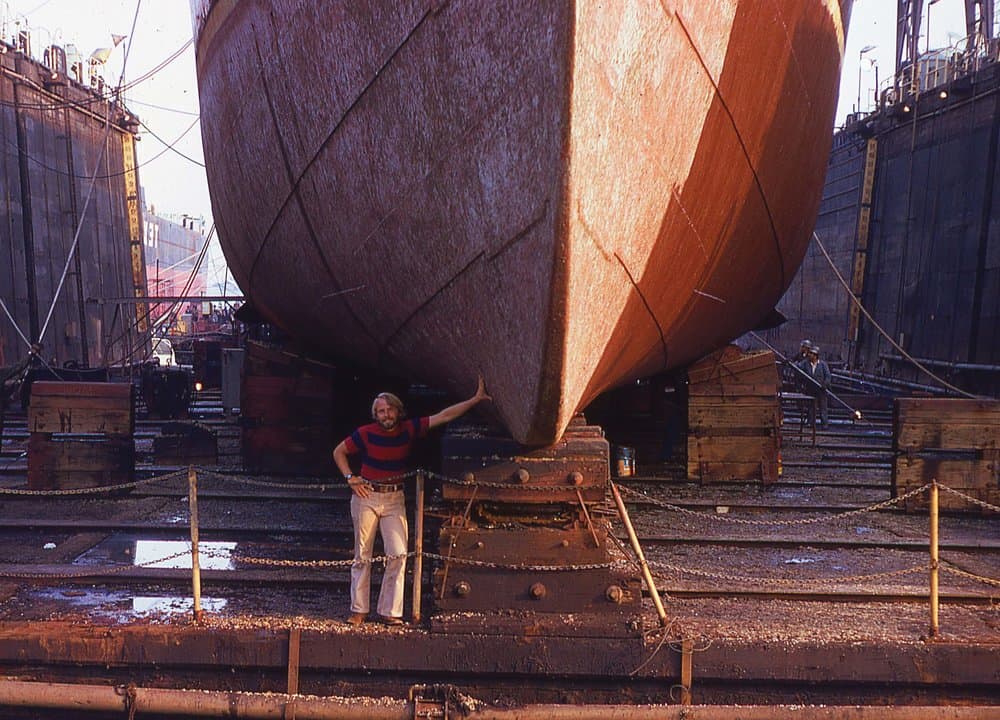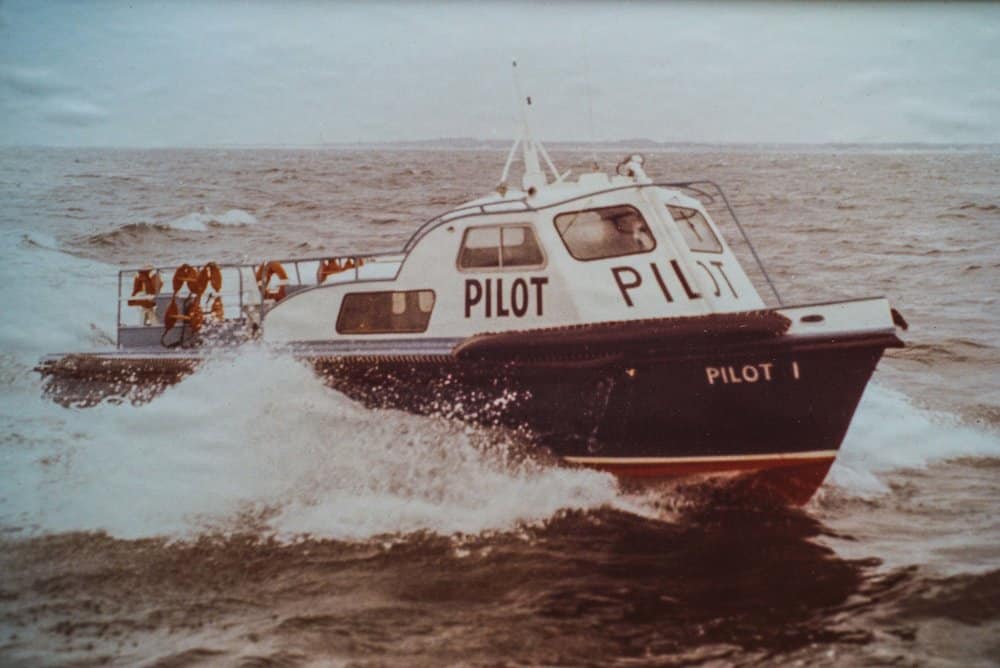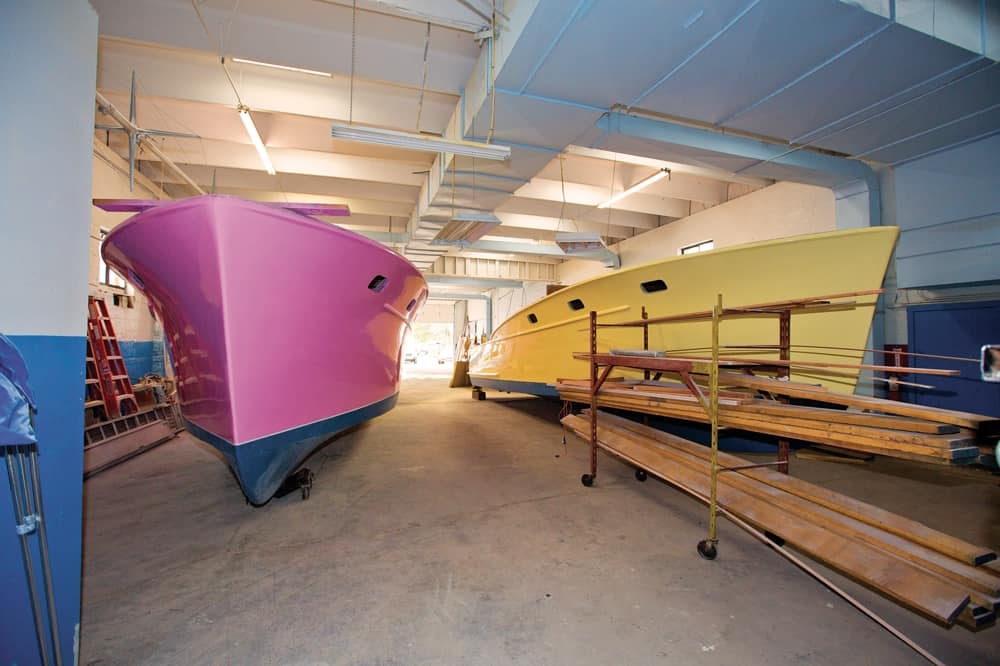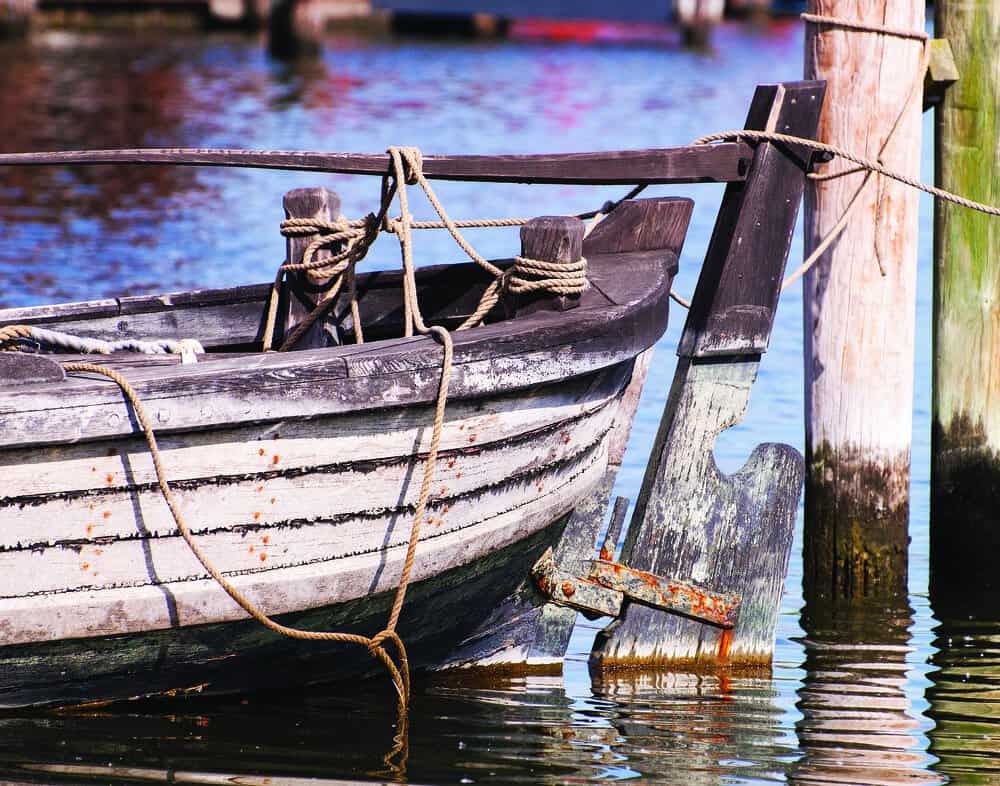Brian Hope
Sam Robinson, my watch assistant on the pilot boat Baltimore that night in 1973, hit the signal lamp switch, stepped out on the bridge wing, and began transmitting a series of double AAs in Morse Code, hailing the unidentified ship approaching Cape Henry from sea. It had not responded on the radio, and in our vernacular this vessel was referred to as a “stranger.” The ship answered— it was the Hellenic Sky, bound for Baltimore. ¶ We had no information or arrival time for this vessel, which happened on occasion back then. Sam got the ship’s draft, 32 feet, and we looked at the roster of pilots on board the Baltimore. First turn was a junior pilot, and the ship was over his allowable draft. The next turn available was a senior pilot, and so, the piloting job was his. Being unexpectedly awakened at 0130 for a 10-hour northbound transit is not pleasant, but it’s the job. ¶ The night was dead calm and crystal clear. Hellenic Sky’s navigation lights were visible to us while she was still hull down on the horizon. We were secured to the mooring just west of 2CH buoy, and it was a simple matter to put the pilot in the launch and send him to his ship. However, not every night was like this one. Sometimes wind, weather, and ship traffic would conspire to make a six-hour watch seem like forever.
Baltimore was built as a yacht in 1930 for Alfred Sloan, Chairman of General Motors, and named RENE (Reenie), his wife Irene’s nickname. The yacht was 234 feet long with twin Winton diesel engines and a single rudder, and she was capable of 16 knots. In 1941, with the outbreak of WWII, the U.S. Navy acquired her, stripped off her lavish trappings, painted her gray, and fitted her with two three-inch guns. She was renamed the U.S.S. Beryl, PY23, and assigned to the Pacific Fleet. She spent part of the war patrolling Hawaiian waters and escorting small convoys. She was decommissioned in 1946 and laid up. The Maryland pilots purchased her in 1948, converted her into the Cape Henry Station vessel, and she remained so from 1949 to 1977.
Baltimore was a floating dormitory. Eighteen crewmen lived aboard, delivering pilots to and from ships entering or exiting the Chesapeake Bay. The steward’s department and cooks were retired Filipinos from the U.S. Navy. Engineers, oilers and deck crew were mostly sturdy men from Cape Hatteras. The latter, raised around boats and water, doubled as pilot launch operators. In fair weather, the pilots lived aboard in relative comfort while awaiting their respective ships. In foul weather, they just held on.


There were two complete crews who worked on the Baltimore in two-week shifts. In 1973, Crew number one’s captain was the capable and experienced Captain George Hudgins of Matthews County, Virginia. Crew number two was run by Captain Tommy Veal, another Hatteras man, and for ten months, I was his mate. Tall and athletic, he exuded a quiet confidence. He was an outstanding ship-handler, mentor, and friend. Tommy and I split the watches. Mine were 1200 to 1730 and 0000 to 0630, and Tommy rounded out the other side of the clock.
While sitting on the mooring, sending and retrieving pilots to and from ships was pretty straightforward. When the inbound ship was about five miles out, our 35-foot aluminum pilot launch, Pilot 1, would lay alongside the pilot boat, a pilot would step aboard and off they went. When not being used, Pilot 1 was tethered off one of the booms extended on either side of the Baltimore, where she would silently wait for the next ship. A typical watch handled six to eight ships.
Vigilance was paramount on board. Many captains unfamiliar with the Chesapeake Bay entrance would presume that the pilot boat was in deep water, and would steer directly at us. This was true even on the mooring. A breakaway line was rigged between the pilot boat and the mooring line, enabling us to break free if an inbound vessel loomed too close.
There was an art to running the Baltimore safely and efficiently in inclement weather. When the weather deteriorated, and there was no longer smooth water running down the sides of the pilot boat, she got underway. To put a pilot on a ship, the watch officer maneuvered the Baltimore upwind and relatively close, a quarter mile or less, to the vessel. This provided the pilot a more comfortable downwind ride to the ship. Conversely, the pilot boat was placed downwind and close when a pilot was being retrieved. With the ship bearing down, it was imperative to get the pilot in the launch and move out of the way quickly. Quite often, there were a number of ships moving around including the Virginia pilot boat Hampton Roads, which complicated safe maneuverability. A mistake could be costly. (On December 1, 1938, the Maryland pilot boat William D. Sanner sank in a collision with the S.S. Levernbank while conducting pilot operations.)
In heavy weather, getting on and off the pilot boat could be even more hazardous than boarding a ship. Not as large as a merchant ship, the pilot boat violently felt the effects of a beam sea. A lee had to be created in order to bring the launch alongside. This was achieved by putting wind and sea on one side of the Baltimore. The launch would then lay in to leeward. Stepping on and off the pilot launch in these conditions required focused attention. Timing was everything.
Shortly before I began working on the Baltimore, a pilot fell between the launch and the pilot boat. Crazy as it seems, in those days pilots rarely wore any flotation devices, and this pilot was no exception. A life ring was thrown to the man, but it was clear that he was rapidly losing strength in the 40 degree water. At great risk to himself, Tommy, who was off watch at the time, dove into the Bay and held the pilot’s head above water until help arrived. It was just good fortune that a Coast Guard boat happened to be in the vicinity with two divers on board. The pilot was so weak that he kept asking Tommy to “just let me go.”
Limited visibility had its own challenges. While on the mooring, and using one of the pilot boat’s two radars, the watch officer would give the pilot launch a course to steer to the ship. Not having radar, those on the launch were dependent on the skill and attentiveness of Baltimore’s bridge team to keep them safe. Unlike most collision avoidance scenarios, the object here was to send the launch as close as possible to the ship without putting it in a position to be run over. Normal procedure would be to direct the launch slightly astern of the vessel in order to cross its wake, enabling the boat to approach from astern. On the launch, it was unsettling to be closing with an unseen ship whose fog signal increased in volume every two minutes as prescribed by international regulations for preventing collisions at sea. It added extra meaning to “standing into danger,” the nautical term for heading into serious trouble.
When underway, the routine ran much the same, with the additional burden of keeping the Baltimore out of harm’s way. In fog, it was a common practice to maneuver the pilot boat astern of the ship and follow in its wake. After boarding the pilot, the launch would fall off the side of the ship, idle its engine, and be retrieved by the Baltimore as she advanced up the ship’s track.
On one occasion, after employing this tactic, there was a delay in getting the pilot aboard his ship. When Tommy glanced up from the radar, he was horrified to see that the ship had turned around and was headed straight at the Baltimore. It was hard right, full ahead and a few heart-stopping moments as the ship passed down the Baltimore’s port side.

One of my most memorable experiences was a wintertime, midnight watch. The pilot boat Hampton Roads was in Norfolk for stores and maintenance, and the Baltimore was handling both associations’ workloads. It had been blowing northeast for most of the day with intermittent snow showers, but by late evening, the wind had come around to the northwest with near gale-force strength. We had one of the Virginia pilot launches plus our own Pilot 1, and we boarded or disembarked pilots on 19 ships in our 6.5-hour watch.
Priority was always given to boarding the inbound ships first, the reason being that ships without pilots were most at risk for a mishap. In conditions like these, the pilot boat remained reasonably close to the launches for safety and efficiency in transferring pilots. As much as we could, one launch was used for inbound ships, and the other for outbound. On the outbound vessels the launch would disembark the first pilot and then drop back to the next ship, and so on. When there was a break in the action, the boat came back to the Baltimore and discharged the pilots. When dealing with inbound ships, we put two or three pilots in the launch, and the exercise was analogous to the outbound procedure.
I recall one trip with a building northwest wind, a screaming ebb tide and a large volume of inbound traffic when the Baltimore was unable to work her way back into the Bay, as was her normal practice. Although the atmosphere was clear, salt-spray on the windows of both launches and the pilot boat diminished visibility and compounded what was already a taxing workload. We ended up in the ocean well east of what was then called CBJ, the Chesapeake Bay junction buoy for the northeast and southeast sea-lanes. I grew increasingly concerned about the launches’ ability to handle the rough offshore conditions. Eventually, fortunately, the traffic slackened with the arrival of daylight, as did the wind.
Not every day was filled with such stress. There were beautiful copper sunrises, pink sunsets, and star-filled night skies. There were schools of dolphins, occasional whale sightings, and calm waters where the Bay looked like glass. There was a bond between pilots and crew, and the satisfaction of a job well-done in an environment that, at times, could be harrowing. Unknown to me at the time, there was also a 41-year career as a Chesapeake Bay pilot lying ahead.




